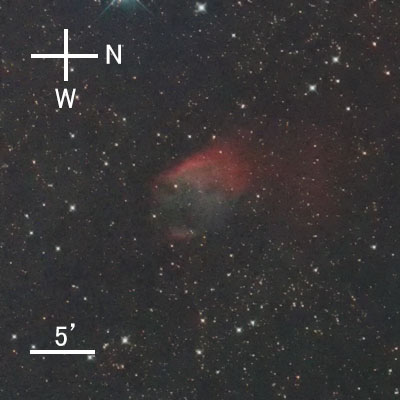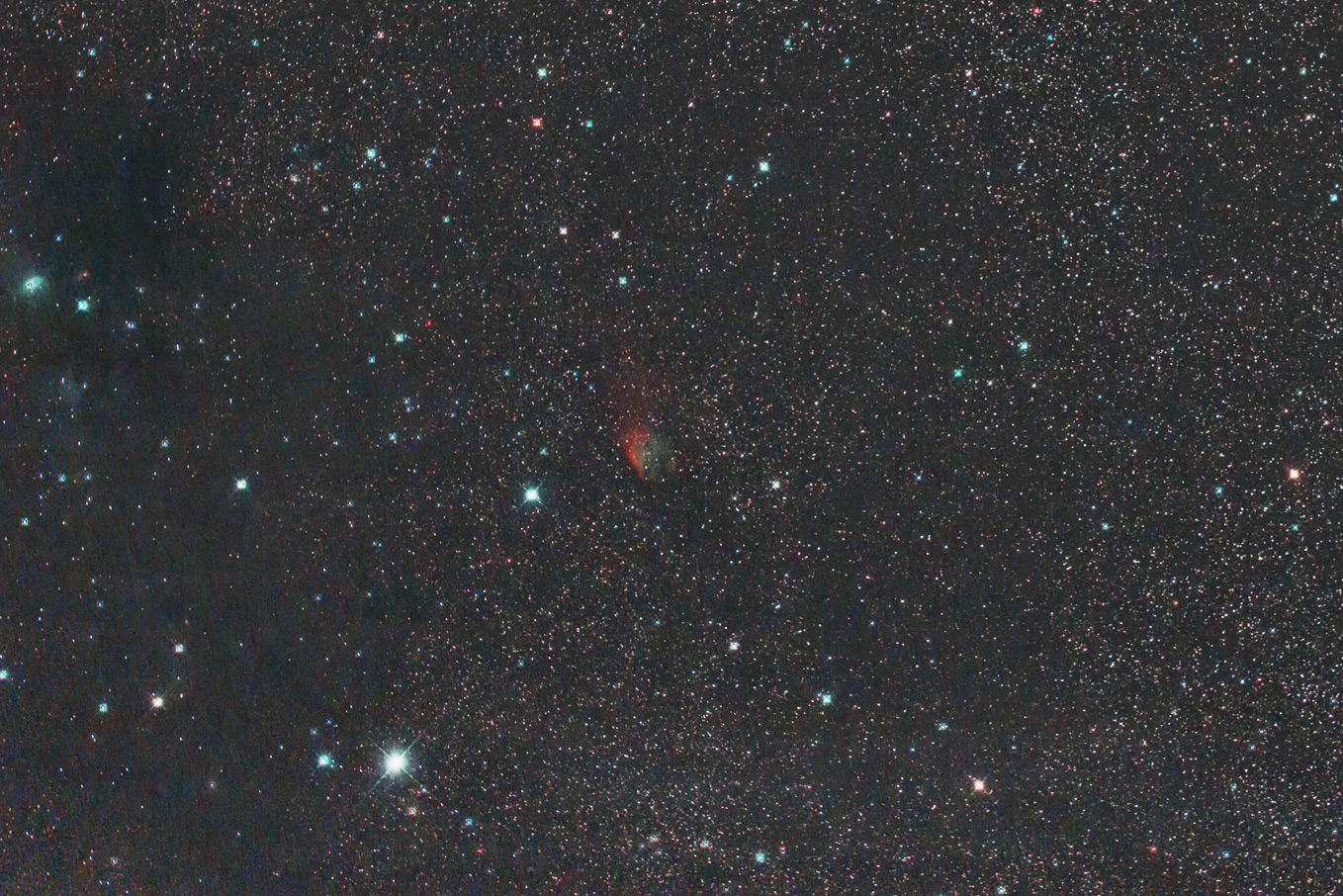| Date & Time: | May 4 2024, from 24:25 to 25:37 JST(+0900) |
| Composed 10 shots with 8 minutes exposed |
| Optical: | TAKAHASHI 16cm(6.3") epsilon (f=530mm, F3.3) |
| with LPS-D1 Light-pollution suppression filter |
| Auto-guided with TAKAHASHI JP Equatorial & SBIG STV |
| CMOS Camera: | ZWO ASI2600MC Pro (Cooled temp.: -15°C) |
| Location: | Ooizumi, Hokuto city, Yamanashi pref. |
| Sh2-68 / Planetary Nebula |
|---|
| R.A. | 18h 25m 01.3s (2000.0) |
|---|
| Dec. | +00°52' 18" (2000.0) |
|---|
| Apparent Size | 7.0' |
|---|
| Real Size | 2.3 light yrs. |
|---|
| Magnitude | 10.0 |
|---|
| Distance | 1100 light yrs. |
|---|
| Other IDs | LBN 93, PK 30+6.1 |
|---|
|
| vdB123 / Reflection Nebula, type 4 R |
|---|
| R.A. | 18h 30m 23.4s (2000.0) |
|---|
| Dec. | +01°13' 41" (2000.0) |
|---|
| Apparent Size | 4.0' |
|---|
| Real Size | N/A |
|---|
| Magnitude | - |
|---|
| Distance | N/A |
|---|
| Other IDs | LBN 96 |
|---|
|
On the right-hand side of this image shows you Sh2-68 bathed in the western side of Milky Way, about 4 degrees north of η Serpentis Cauda.
The nebula has a size of about 7 arc minutes, classed as comparatively larger planetary nebula.
It's considered that the nebula was formed at least 40 thousand years ago, very ancient one in the heavens.
Sh2-68 is emitting the oxygen's greenish light in center and the hydrogen's reddish streak stretched in northeast direction.
It's considered that the unique shape has been formed with a central star rapidly moving.
A magnified image turned the north direction rightward looks like a human's face. The figure gave a nickname of the "Flaming Skull Nebula".
About 1.4 degrees ENE of Sh2-68, an extremely indistinct dark nebula can be observed.
While this nebula is unnamed, the reflection nebula located to its east carries the catalog number vdB123.
 |
Magnified image of Sh2-68 |
|

